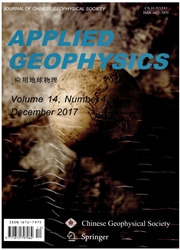

 中文摘要:
中文摘要:
通过最新的全球地磁模型——CALS10K.1b,结合CALS3K.4与IGRF11模型,计算并分析了10000BC~1990AD期间中国大陆及邻近地区非偶极子(ND)磁场Z分量的时空变化。为了深入了解ND场的变化,从场源的角度,对2n(n=2-10)极子ND场及其对应的能量进行了分析。结果 显示在研究期间ND场的变化可分为3个阶段。在10000BC-2500BC期间,ND场以正值为主并持续了近7500a,在2500BC-1500AD期间强度转弱为以负值为主并持续至1500AD,自此快速增强为以正值为主。东亚地区ND场异常基本在截断阶数(n)为3时即形成,且该异常区已在大陆地区内形成了封闭的圆形区域,这意味着前3阶的ND场占据了总ND场强度的大部分。ND场在核幔边界(CMB)处衰减较快,在地表处则趋于稳定。
 英文摘要:
英文摘要:
Spatiotemporal variations of the nondipole (ND) magnetic field over the Chinese mainland and neighboring regions from 10000 BC to 1990 AD were analyzed using the latest global geomagnetic models CALS10K.1b, CALS3K.4, and IGRF 11. Moreover, for field sources, we investigated 2 n (n = 2 -10) pole ND fields and their energies. The results suggest that the study period can be divided into three. The intensity of the ND field has been mainly positive since 10000 BC and lasted almost 7500 years, then gradually decreased to negative in 2500 BC to 1500 AD, and finally sharply increased to positive. The anomaly areas of the ND field in East Asia took shape for n - 3, when the anomaly areas in East Asia were shaped into closed circles in the mainland. This suggests that the first three harmonic degrees account for most of the ND field. The energy of the ND field rapidly attenuates at the core mantle boundary and is stable at the surface.
 同期刊论文项目
同期刊论文项目
 同项目期刊论文
同项目期刊论文
 期刊信息
期刊信息
